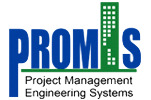| Course Information | ||
|---|---|---|
| 1 | Venue | Abu Dhabi, U.A.E. |
| 2 | Date | 22 -26 Nov 2020 |
| 3 | Download PDF | |
4 | Registration Fees | |
5 | Register | Online 800 PROMIS |
6 | Presenter |
- Provide the basis for identifying and preventing hazardous occurrences.
- Integrate Safety in normal operations
- Acquaint with approaches and methodologies used to classify & quantify hazards.
- Help understand the impacts of changing operating conditions and design modifications on the operation of a process.
- Initiate response to deviations and deficiencies in process design and its control system;
- Anticipate problems & implement corrective measures
- Ensure safe practices and reduction of errors, mishaps and/ or accidents; analyze incidents & near-misses
- Acquaint engineers and managers with recent advances in Hazard Assessment tools and supporting software.
- Increase efficiency, safety and productivity
PROGRAM
Day One - Overview of Safety & Loss Prevention
- Safety Policies & Procedures
- Safety Culture
- Traditional Goals of Safety
- Elements of Safety Program
- System Safety Analysis
- Developing Loss Prevention Policies & Procedures
- Risk Control & Safety
- The Safety Case Approach
- Assessing Risk potential of a facility
Hazard Identification & Control
- The Goal of a Hazard Identification & Control Program
- What Is Hazard?
- Modes of Hazard
- Classification of Hazard
- Principles & techniques of identifying chemical hazards
Industrial Fires/ Explosions
- Types of Industrial Fires & Explosions
- Sources of Ignition & Fire spread possibilities
- Assessment of Consequences
- Vulnerability Analysis
- Identification of hazard prone areas
- Learning from Incidents
- Case Studies
Day Two- Hazard Analysis
- Analyzing the Workplace
- Problem Solving
- Monitoring the Results
Use of Hazard Identification Techniques in Safety Analysis
- Strategy for Hazard Assessment
- Hazard Identification Process
- General Techniques of Hazard Identification
- Ranking Methods
- Checklists
- WHAT-IF....?
- HAZOP
- FTA/ ETA
- Failure Modes & Effects Analysis (FMEA)
- Use of Historical Frequencies in analysis
- Techniques used in Incident Prediction/ Prevention
- Hazard-Barrier-Target Analysis (HBTA)
- Change Analysis
- Job Safety Analysis
- Materials Failure Analysis
- Selection of Techniques
Hazard Assessment Software demonstrations & exercises
Day Three- Overview of HAZOP technique
- Definitions & terminology
- Illustrating the sequence of application
- Human factors in HAZOP study
- Use of special features in computerized HAZOP techniques
- Analysis of information from P&I diagrams, PFD, etc
- Composition & Selection of the team
- Preparation of Reports
Application of HAZOP to operations
Workshop/ discussion using PC based HAZOP software
Examples & case studies
Follow-up of HAZOP results
- Evaluation of HAZOP results through Quantification techniques
- Consequence Modeling Aspects
- Description of Accident Scenarios
- Results from Hazard Quantification procedures
- Probability Analysis using Fault Tree/ Event Tree Analysis
- Shortlisting of Events and Follow up
Day Four- Hazardous Area Classification for Protection of Equipment
- Purpose & Objectives of HAC
- Approach to HAC using Codes & Standards
- How & when is HAC carried out?
- Description & Definitions of Zoning
- Identification of Flammable & Combustible Material
Selection & Safeguarding of Equipment in Hazardous Locations
- Safety of Electrical Equipment
- Basic Principles in the various types of protection
- Methods of Protection
- Classification & Selection of Electrical Apparatus
- Safeguarding of the Equipment
- Marking & Certification of Equipment
Case Studies, examples & application
Day Five - Safety Performance & Reliability of Equipment
- The need for safety systems
- Safety Availability and Reliability terms and concepts
- Methods for matching process risk to safety performance requirements
- The difference between process control and safety control
- Identification of Critical Equipment for Preventive maintenance
- Management of Incidents
- Safety Performance and Monitoring
- Regulatory Requirements
Management of Fire & Explosion Incidents
- Control Measures
- Detection of leaks
- Emergency Response Plan
- Basic Plan Requirements
- Detailed Emergency Response Plan
- Sections of a Detailed Emergency Response Plan
- Maintaining the Plan
- Examples & Exercises




